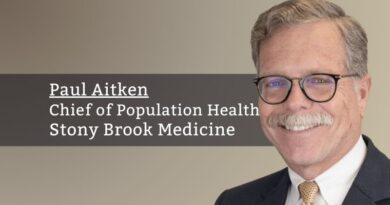Health Equity and Digital Equity Insights: Addressing Past Inequities and Tomorrow’s Expectations
By Garth Walker, MD, MPH, Chief Medical Officer, Rush Health
Chicago’s Rush University Medical Center’s (Rush) national leadership and vision for addressing healthcare’s past failings and today’s patients’ evolving expectations for how digital technology should shape healthcare delivery can combine to provide a compelling blueprint for how healthcare institutions can address the root causes of chronic diseases that shorten lives and cost the nation billions of dollars.
Innovative population health-focused technology solutions are playing an essential role.
In 2017, Rush became the nation’s first major hospital to establish health equity – everyone having the equal opportunity to be healthy – as a measurable, and accountable system strategy. At the core of this strategy was a mission shift to not only deliver the world-class patient care that has Rush consistently ranked among the nation’s top providers, but also to improve the health of the local communities Rush serves by thinking holistically about how health equity affects digital access and clinical outcomes.
And Rush’s recent commitment to a transformative, multi-year digital experience strategy is accelerating efforts. Hence, patients are better able to access and navigate their health and wellness journeys while also working to improve digital health equity: Fair access to health technologies for those who need them most.
Understanding how these parallel strategies’ reliance on new technologies that improve accurate clinical diagnostics intersects with population health efforts can help health systems better advance value-based care and health equity progress.
More advanced technology not only collects and analyzes data, but also ensures that the insights derived are used to create inclusive and effective health solutions.
Addressing unacceptable gaps in lifespans
Rush’s commitment to a health equity strategy is based on data showing a 14-year gap in lifespan between residents of downtown Chicago and those of primarily black neighborhoods just a few miles to the west. It recognizes the pivotal role of addressing the social determinants of health (SDOH) and lived experiences that shape many black and brown communities. Understanding these dynamics allows Rush to think about digital tools differently in terms of how they engage families on the economic spectrum.
Partnering at the Intersection of value-based care and health equity
Like most health systems, Rush has also been growing and improving value-based care approaches along several fronts. One of the highest profile and innovative is its partnership with a leading health solutions company which explores novel reimbursement models focused on health equity known as ACO REACH (Realizing Equity and Community Health), a pilot program from the Centers for Medicare and Medicaid Services (CMS) that tests alternative payment models. Traditional reimbursement models often fail to account for the unique needs and challenges faced by underserved populations. However, the ACO REACH model develops and implements digital strategies and partnerships that haven’t traditionally been attempted, especially addressing barriers to access, such as transportation and socioeconomic factors, which disproportionately affect marginalized communities. Aligning financial incentives with health equity goals is powered by analytics that provides insights on risk, member profiles, and actionable solutions related to demographics and evidence-based medicine. Population tools and analytics that assess the social and clinical risk factors allow our health system to apply accurate clinical diagnostics to the patients that need them the most.
Rush has also joined forces with two leading population health technology providers to gain deeper insights into the health behaviors, social conditions, and care patterns of Medicaid populations. This allows for the development of targeted interventions addressing the root causes of chronic diseases, rather than just treating symptoms.
An AI-powered analytics platform along with a healthcare technology company enables patients and providers to better manage chronic diseases that shorten countless lives in underserved communities. For example, we assume psychological factors are the drivers of Chicago’s lifespan gaps, but detailed analytics show that hypertension and other manageable chronic conditions steal thousands of life years annually.
For example, Rush care providers worked with a healthcare technology company to create tools for patients and providers that advanced data analytics capabilities, incentivizing populations to not only navigate their communities but be empowered to improve chronic conditions for themselves or loved ones.
This collaboration is particularly significant in the context of what is known as digital health equity, or fair access to health technologies for those who need them most. More advanced technology not only collects and analyzes data, but also ensures that the insights derived are used to create inclusive and effective health solutions. For instance, a better understanding of the barriers that prevent populations from accessing care led to the design of more user-friendly mobile health tools that helps patients both embrace local resources and incents them to engage in behaviors proven to lower blood pressure.
This holistic approach recognizes that technology, when used equitably and complementary to population-based tools, has the power to transform health systems and close the life expectancy gap. And doing so on Chicago’s West Side can also show that creating an equitable health system that reduces cost and improves the lives of individuals and communities alike is possible.



